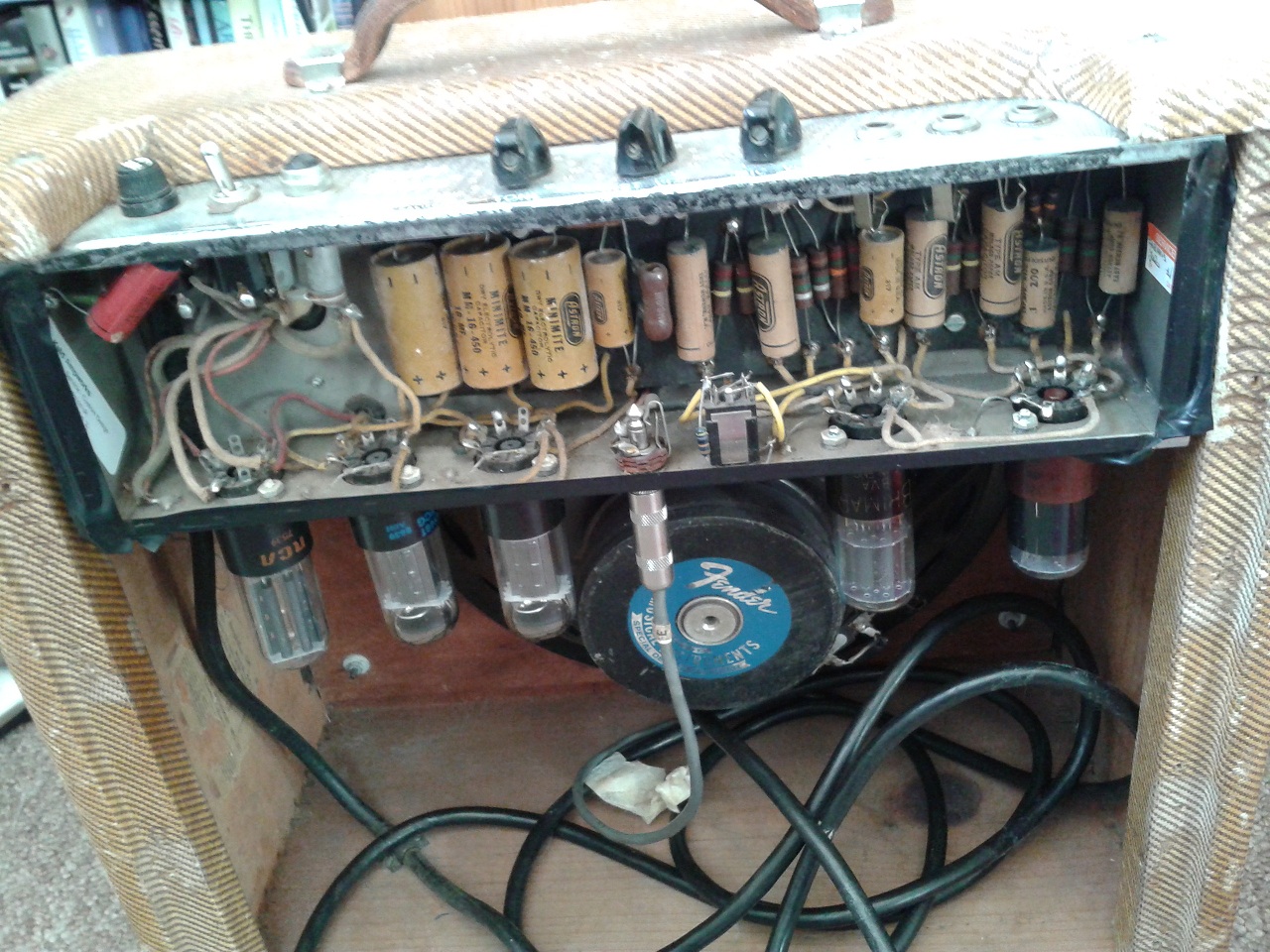This Fender Brownface repair was something of a labour of love here at Keld Ampworks. It’s a fascinating amp – having started life presumably in America, it’s got a 110V transformer. At some point it made its way to Belgium, where it was ‘converted’ to EU voltages, using a rather scary transformer bolted to the inside of the woodwork. It was later bought by the current owner and brought to the UK.
This was my first Fender Brownface repair. I’ve done blackface Fenders, Tweeds and Silverface fenders but never before a Brownface. Nice to have something new.
My first task was to make the amp safe. The Fender ‘death cap’ is well documented elsewhere so I won’t dwell on it. Suffice to say that it was removed, and a 3 core earthed mains lead with US plug fitted. The fuse and mains power switch were moved to the ‘live’ line. They don’t make ’em like this any more! The scary open frame in-cabinet transformer was also removed from circuit and replaced with a removable US-UK transformer. This makes the amp more ‘original’ and also safer. Double win!
Most of the preamp tubes were still good. The power valves were replaced with a new set of Sovtek 5881s and one preamp was replaced. The valve sockets were all tensioned and cleaned.
Checking the filter caps inside I saw that 2 out of 7 had already been replaced – but with underrated parts (350V instead of 500V!). Of the remaining five, three were leaking electrolyte and so after consulting the customer I replaced all 7. I was able to preserve the original filter cap covers and use them to conceal modern Rubycon parts at 700V.
At this point the amp was much more stable but had a few intermittent crackles and bangs. Many of these were sorted by replacing some coupling capacitors.
The last issues were with the ‘Vibrato’ channel. The vibrato modulation was bleeding through horribly onto the normal audio signal. This turned out to be further cathode bias and coupling issues.
If you need a fender Brownface repair, please give me a call.

